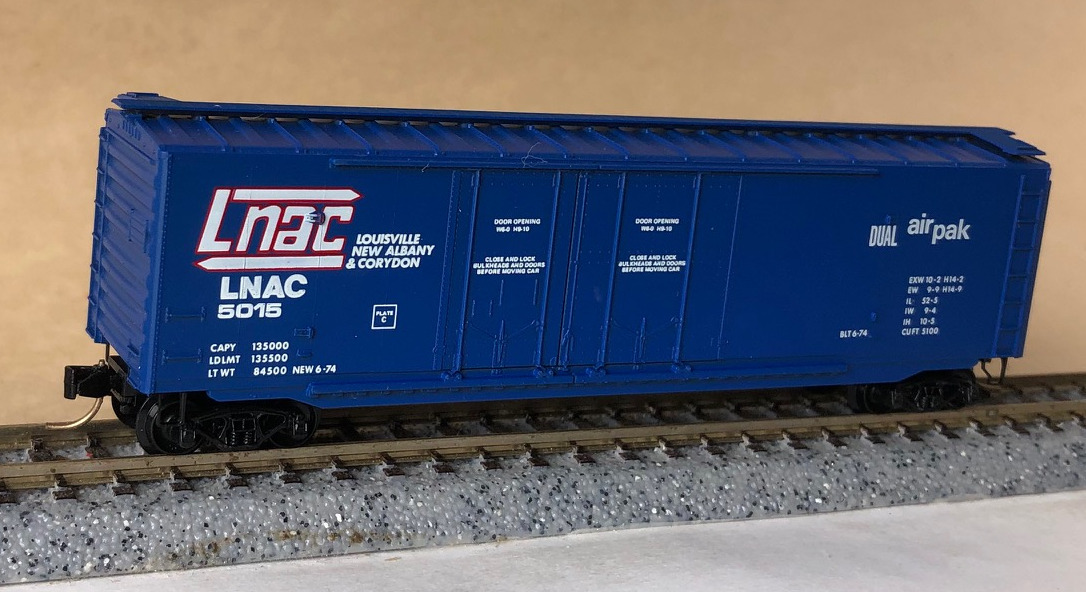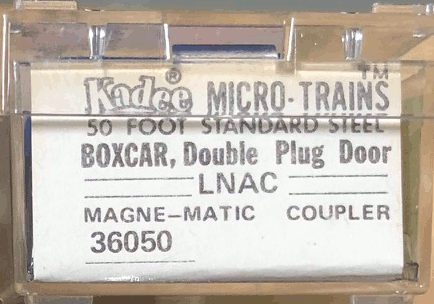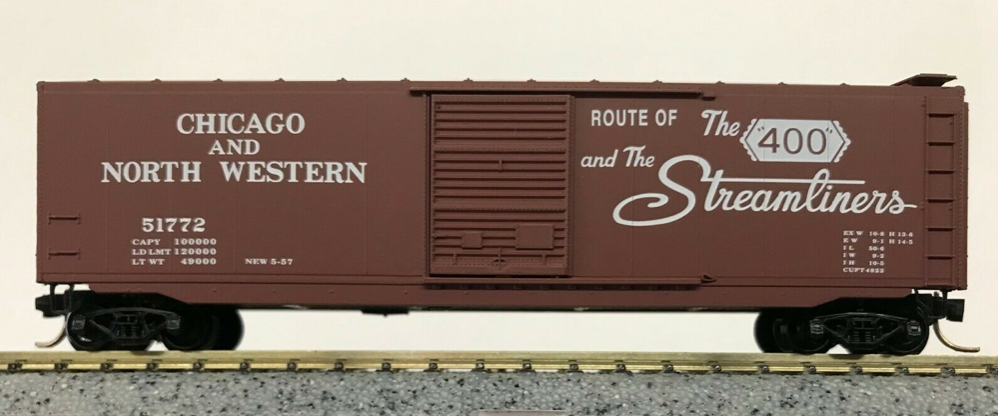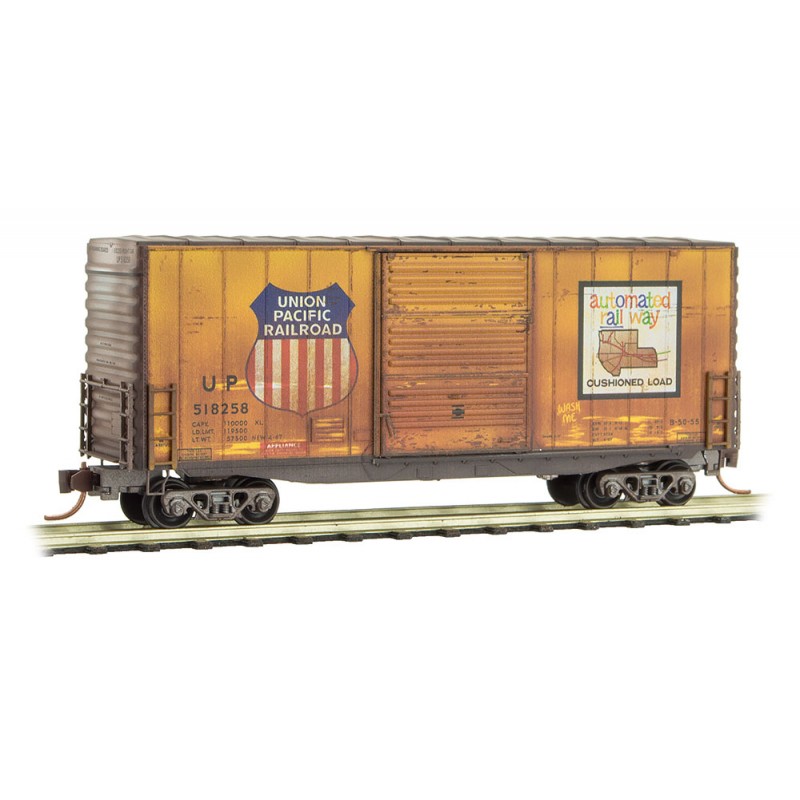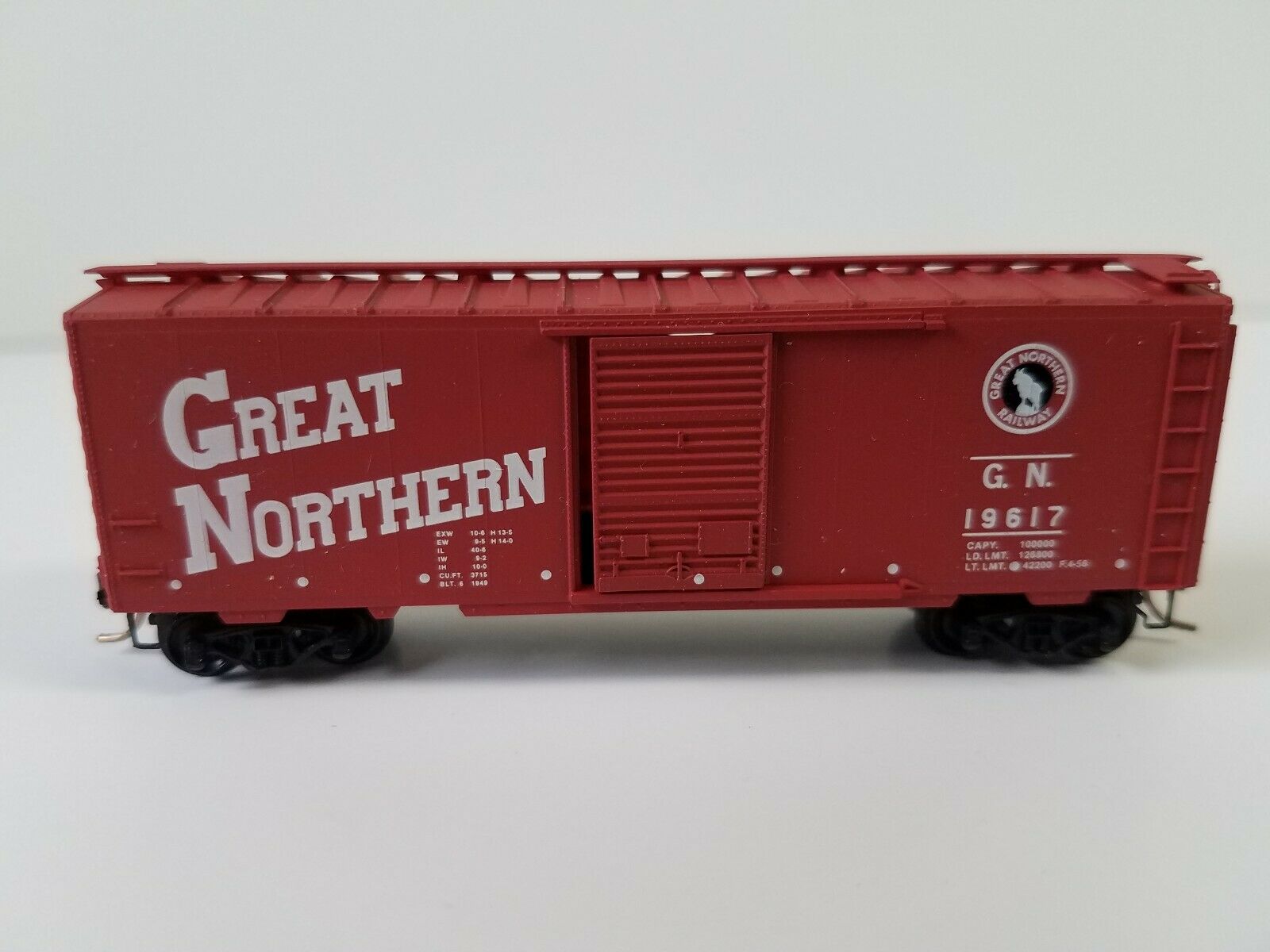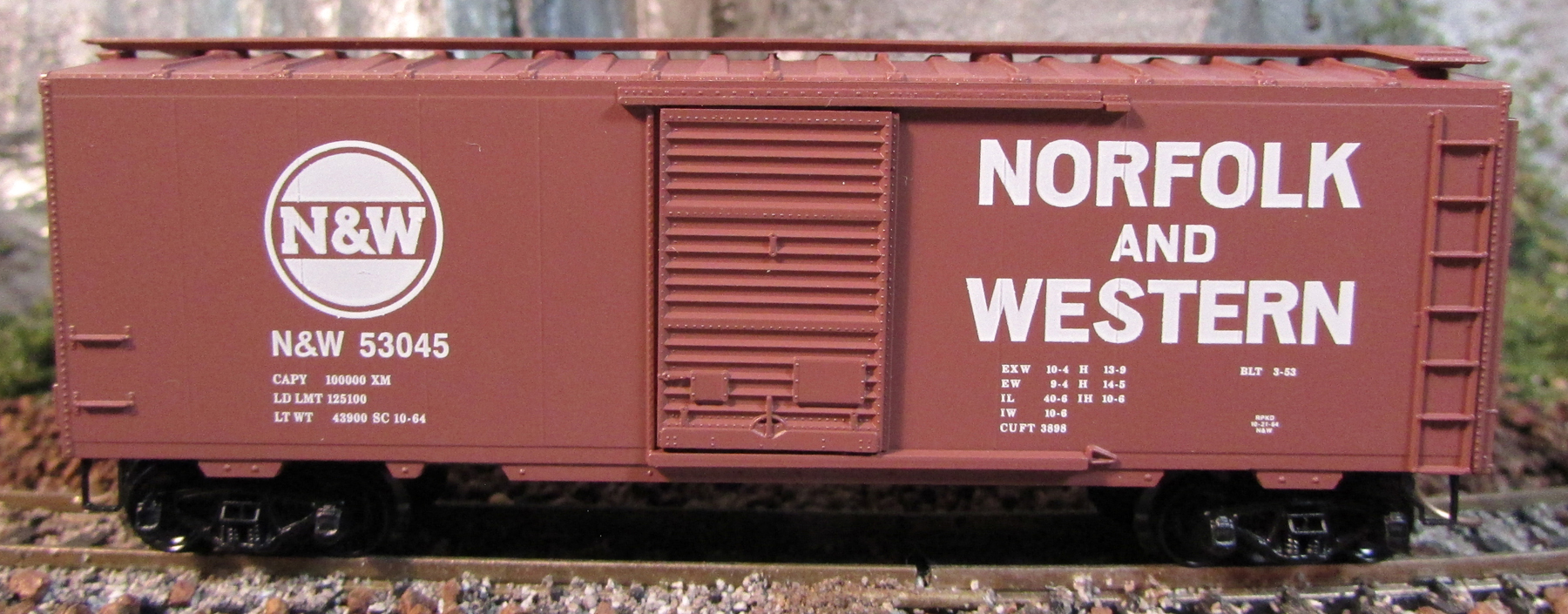Prototype History: The 50-foot boxcar made its first appearance in the 1930s and steadily grew in popularity over the years, which further improved redundancies by allowing for even more space within a given car. Today, the 50-footer remains the common boxcar size. After the second world war ended, and steel became once again readily available, steel became the go-to choice for construction of boxcars. Pullman Standard and ACF were some of the most prolific builders of these cars.
In the 1960s, the flush, "plug" style sliding door was introduced as an option that provides a larger door to ease loading and unloading of certain commodities. The tight-fitting doors are better insulated and allow a car's interior to be maintained at a more even temperature.
In the 1960s, the flush, "plug" style sliding door was introduced as an option that provides a larger door to ease loading and unloading of certain commodities. The tight-fitting doors are better insulated and allow a car's interior to be maintained at a more even temperature.
Road Name History: 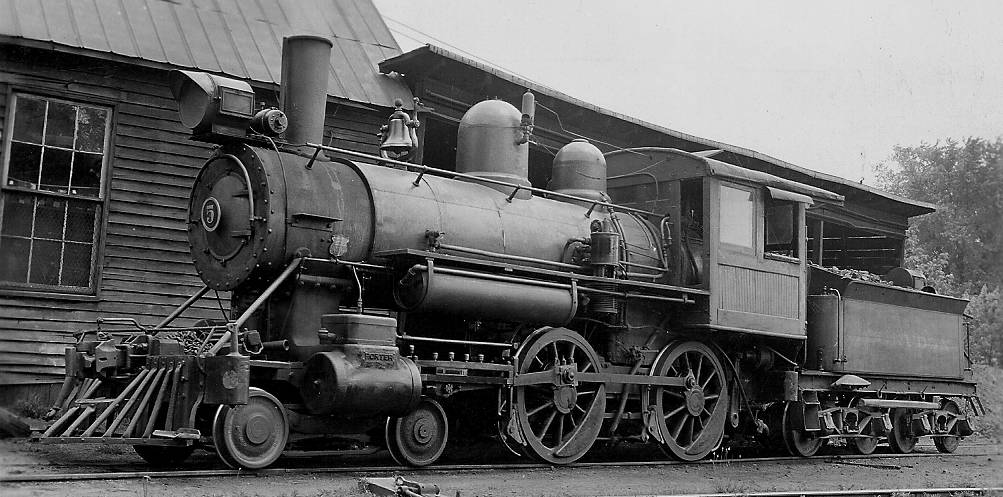 The LNAC opened their 8 mile line to Corydon, Indiana in 1883. Part of the route involved fording a stream – a practice not uncommon on steam powered logging lines. Presumably this was changed to a culvert before their 4-4-0 was replaced with a small GE diesel switcher. Freight car builder and lessor Evans bought the LNAC in 1980, using the railroad as a common carrier anchor for their extensive per diem and lease freight car fleet. Itel bought the LNAC from Evans in 1987, then the following year, sold the railroad to local investors but kept the LNAC reporting marks. The new owners adopted LNAL reporting marks. In 2006, the line was sold to their largest customer, Lucas Oil Products who have changed the name of the railroad to Lucas Oil Rail Line but with LNA&C lettering still making an honorary appearance.
The LNAC opened their 8 mile line to Corydon, Indiana in 1883. Part of the route involved fording a stream – a practice not uncommon on steam powered logging lines. Presumably this was changed to a culvert before their 4-4-0 was replaced with a small GE diesel switcher. Freight car builder and lessor Evans bought the LNAC in 1980, using the railroad as a common carrier anchor for their extensive per diem and lease freight car fleet. Itel bought the LNAC from Evans in 1987, then the following year, sold the railroad to local investors but kept the LNAC reporting marks. The new owners adopted LNAL reporting marks. In 2006, the line was sold to their largest customer, Lucas Oil Products who have changed the name of the railroad to Lucas Oil Rail Line but with LNA&C lettering still making an honorary appearance.

Brand/Importer Information: Micro-Trains is the brand name used by both Kadee Quality Products and Micro-Trains Line. For a history of the relationship between the brand and the two companies, please consult our Micro-Trains Collector's Guide.
Manufacturer Information:  Kadee Quality Products originally got involved in N-Scale by producing a scaled-down version of their successful HO Magne-Matic knuckle coupler system. This coupler was superior to the ubiquitous 'Rapido' style coupler due to two primary factors: superior realistic appearance and the ability to automatically uncouple when stopped over a magnet embedded in a section of track. The success of these couplers in N-Scale quickly translated to the production of trucks, wheels and in 1972 a release of ready-to-run box cars.
Kadee Quality Products originally got involved in N-Scale by producing a scaled-down version of their successful HO Magne-Matic knuckle coupler system. This coupler was superior to the ubiquitous 'Rapido' style coupler due to two primary factors: superior realistic appearance and the ability to automatically uncouple when stopped over a magnet embedded in a section of track. The success of these couplers in N-Scale quickly translated to the production of trucks, wheels and in 1972 a release of ready-to-run box cars.
In October 1990 Kadee separated in two companies, with the newly created Micro-Trains® Line Co. continuing the Z, Nn3, and N Scale product ranges, with Kadee retaining the HO range.

In October 1990 Kadee separated in two companies, with the newly created Micro-Trains® Line Co. continuing the Z, Nn3, and N Scale product ranges, with Kadee retaining the HO range.
Item created by: Lethe on 2015-05-31 17:46:30. Last edited by gdm on 2020-12-09 19:02:46
If you see errors or missing data in this entry, please feel free to log in and edit it. Anyone with a Gmail account can log in instantly.
If you see errors or missing data in this entry, please feel free to log in and edit it. Anyone with a Gmail account can log in instantly.


